Caring for your ePE Gore-Tex
Posted by Andy Neil on Oct 01, 2025
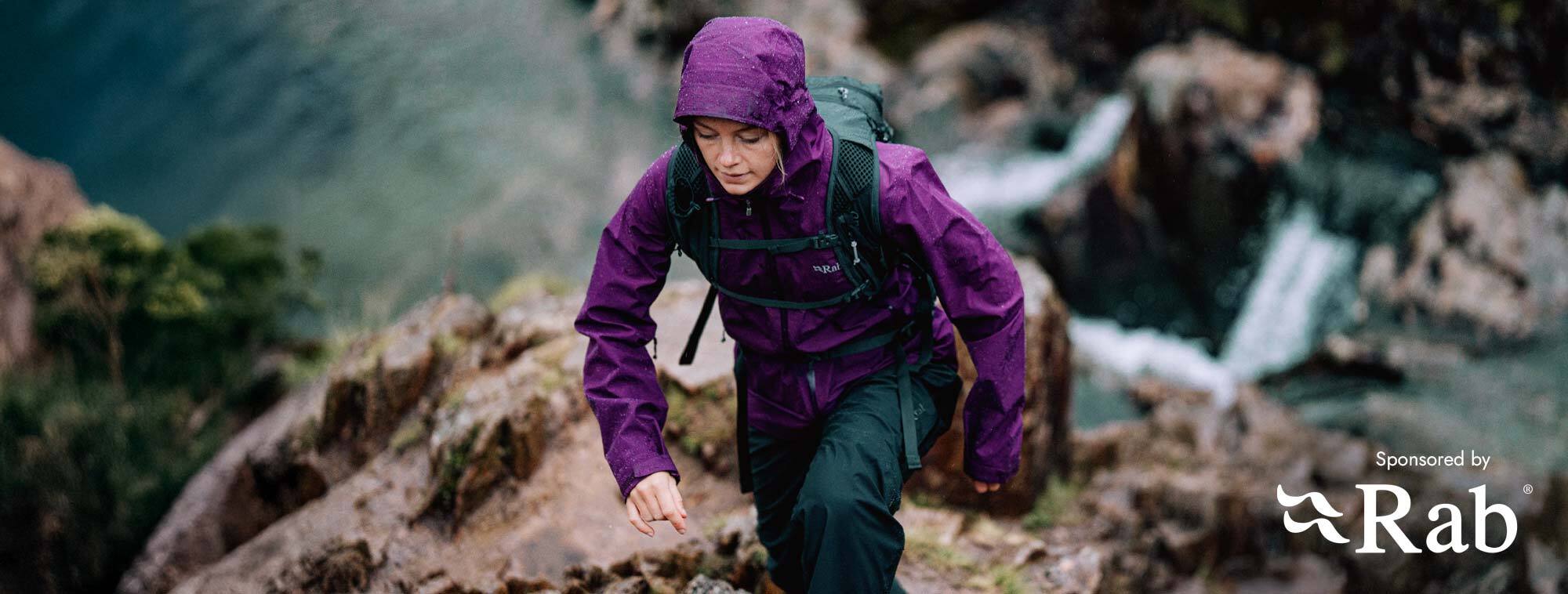
Gore-Tex’s new ePE (expanded polyethene) membrane is the next generation of waterproof-breathable technology. It delivers the trusted protection Gore-Tex is known for, but with a lighter footprint on the planet, thanks to PFAS-free chemistry and a lower carbon impact.
Taking care of your ePE jacket is essential: unlike older membranes, ePE relies more heavily on the user’s care to maintain peak performance. Regular washing, proper drying, and periodic reproofing keep your jacket waterproof, breathable, and adventure-ready for years to come.
This guide focuses on Gore-Tex jackets, but the care principles apply to all Gore products. The only extra tip worth highlighting is for waterproof trousers, they tend to pick up dirt more quickly by nature, so they usually need washing more often than jackets.
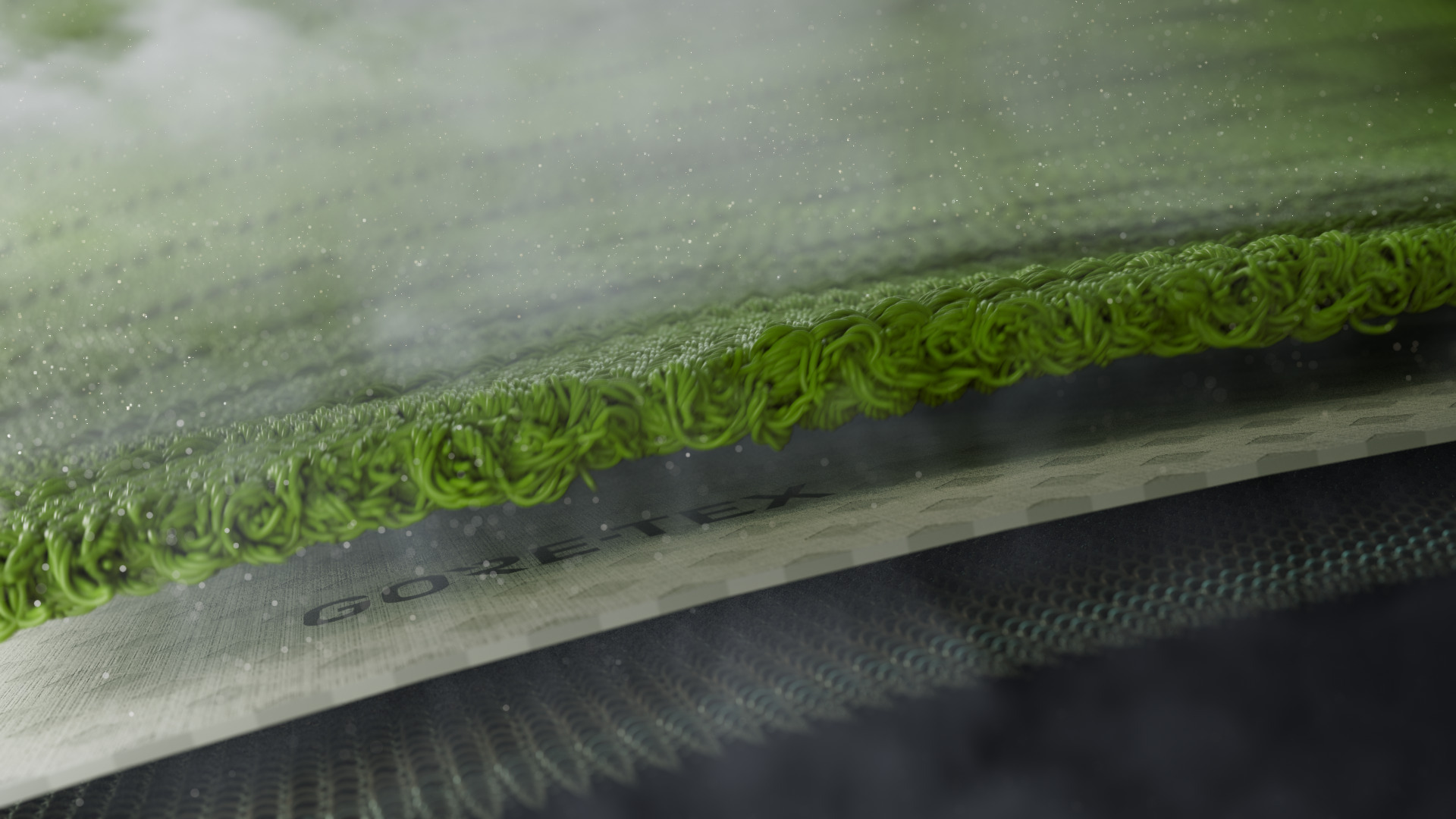
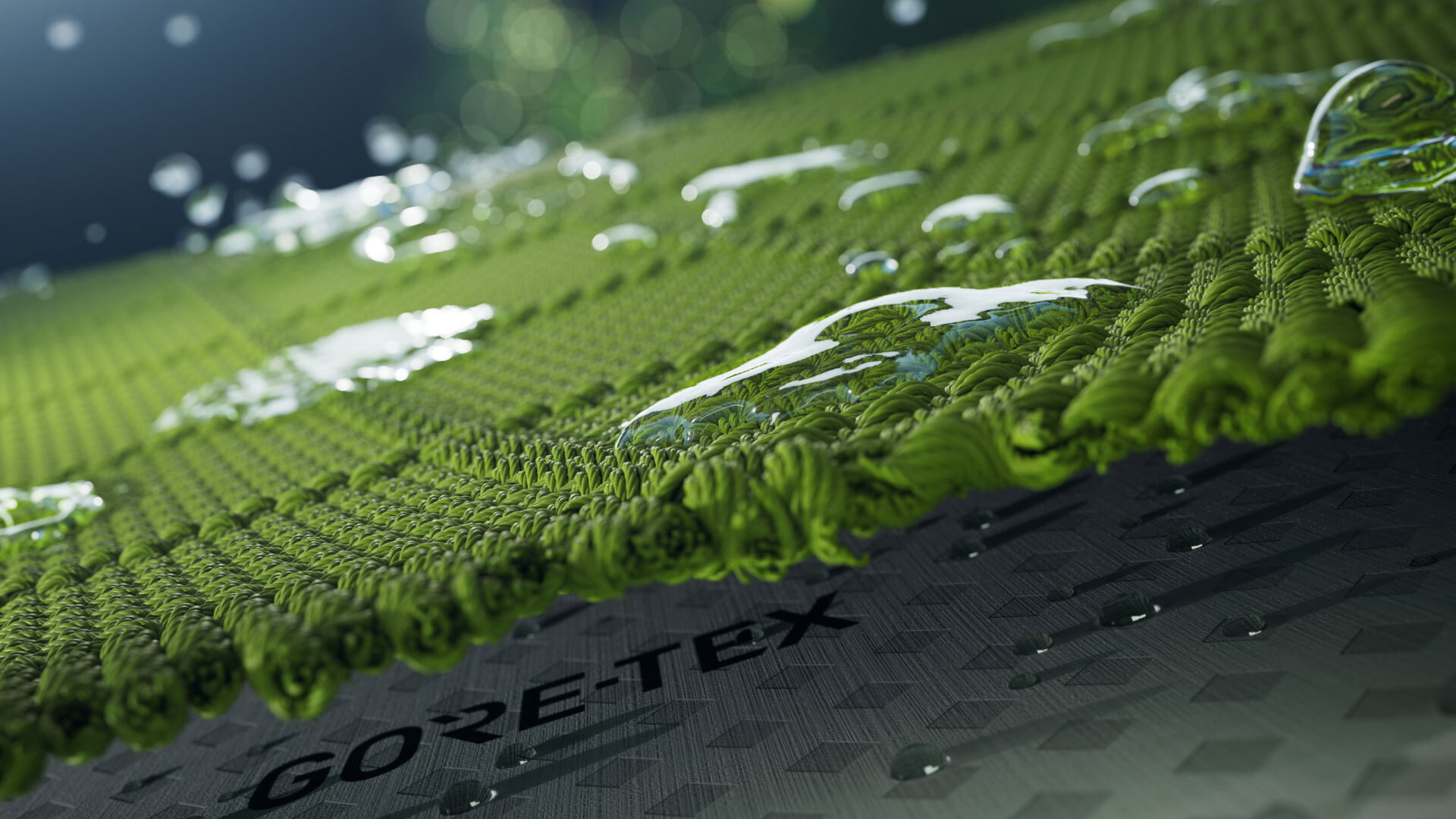
What is Gore-Tex ePE and why the Change?
Expanded Polyethene (ePE)
This new membrane uses a thin, microporous layer; each square inch of a GORE‑TEX membrane contains nine billion pores, each small enough to block rain and wind, yet large enough to let sweat vapour escape. The result: reliable waterproof, windproof, and breathable protection, even during high-output activities.
Eco Upgrade
Older Gore-Tex relied on ePTFE membranes and DWR coatings containing persistent “forever chemicals.” ePE is a fluoropolymer-free material and is paired with PFAS-free water-repellent finishes, helping Gore reduce its carbon footprint while minimising harmful chemistry. You get the same trusted performance, with a lighter impact on the planet.
Durability & Responsibility
The ePE membrane itself is strong and long-lasting, but its PFC-free DWR coatings wear down faster. That means your jacket requires more attention, regular washing, proper drying, and occasional reproofing to maintain its optimal performance. With care, ePE jackets can last for many years, combining durability with sustainability.
Washing Your Gore-Tex ePE Jacket
Why Washing Matters
The main sign your jacket needs attention is when rain no longer beads up and rolls off, but instead soaks into the face fabric. This not only looks wet, it also reduces breathability. Here’s why: once the outer fabric is saturated, it holds a cold layer of water against the surface. As your body produces warm, moist air inside the jacket, that vapour hits the cold outer layer and condenses leaving you feeling damp, clammy, and uncomfortable, even though the membrane is still technically waterproof.
Keeping the face fabric clean and the DWR refreshed prevents this “wetting out,” ensuring your jacket stays breathable, comfortable, and performing at its best.
How Often to Wash
Unlike older Gore-Tex jackets with long-lasting DWR, ePE jackets benefit from more frequent washing to maintain performance. You don’t need to wash after every trip, but don’t let the jacket stay dirty. Wash and re-proof whenever water stops beading on the surface (a sign the DWR is wearing down), or after exposure to heavy dirt, mud, salt, or oils. Regular cleaning, performed a few times per season or several times a year, depending on your usage frequency, helps the jacket breathe and repel water effectively.
Tip: If rain soaks into the fabric instead of forming droplets, it’s time to wash and re-proof the jacket.
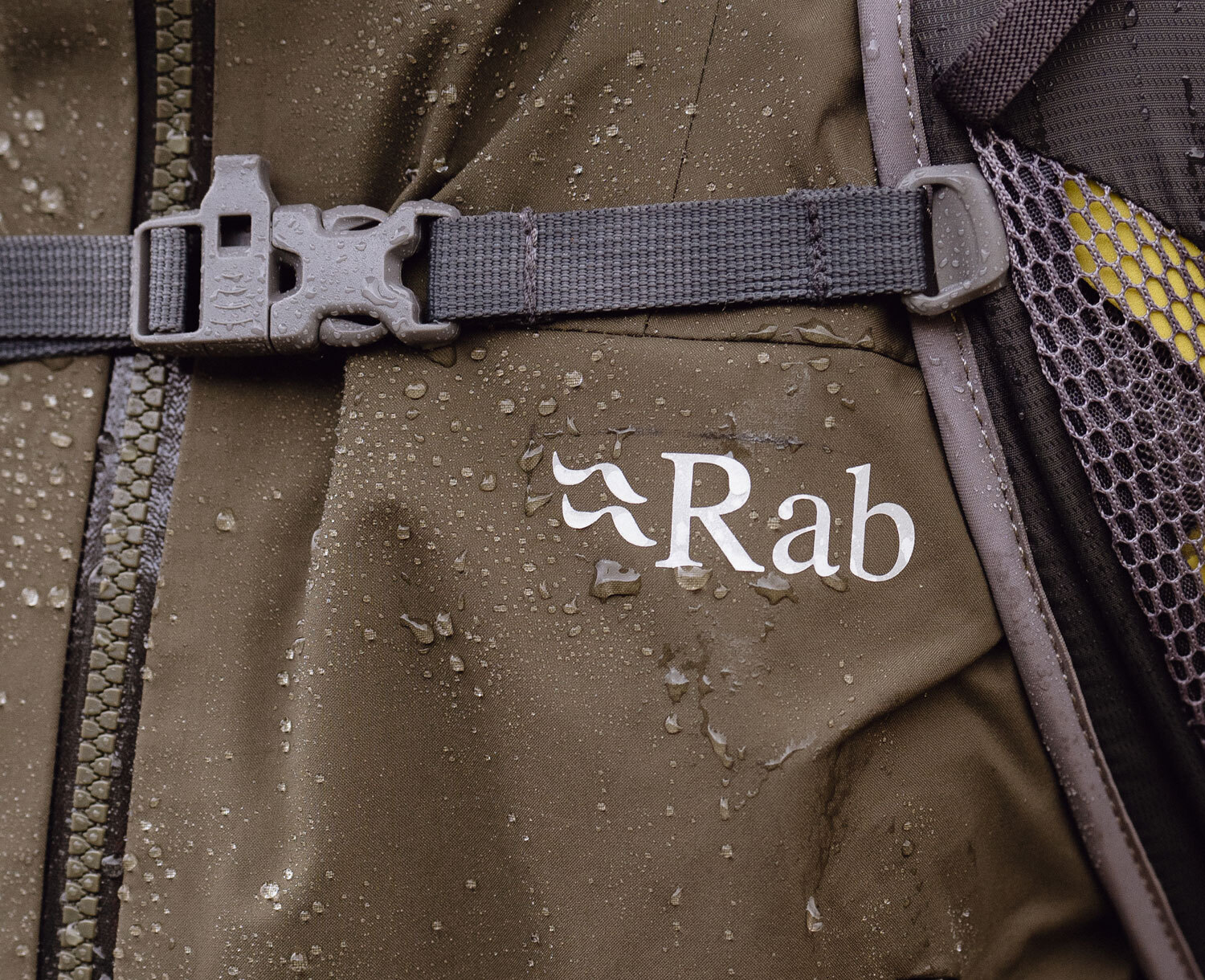
Check the Care Label First
Always follow any specific instructions on your jacket’s label. Most Gore-Tex shells have similar care needs, but it’s worth double-checking for your particular garment.
Prep the Jacket
Brush off loose dirt and debris. Empty all pockets and close all zips (including the main front zip), flaps, and Velcro tabs. Loosen any drawcords or fastenings on the hood and hem.
Clear the Drum
Before washing your jacket, run an empty rinse cycle in the machine to flush out any leftover detergent or fabric softener. Also remove and rinse the detergent drawer/tray, as residues here can contaminate your jacket during the wash.
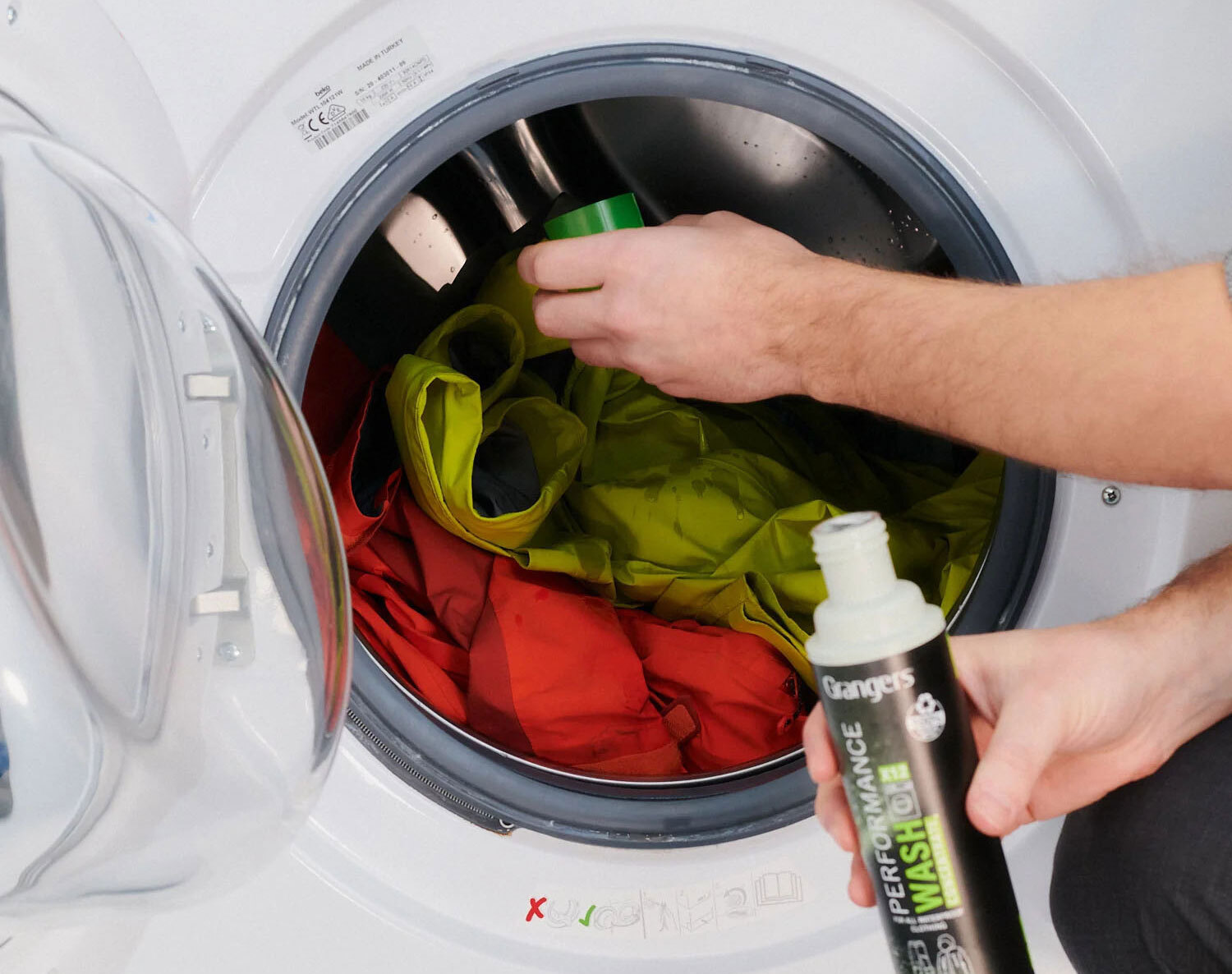
Machine Washing
Wash your Gore-Tex ePE jacket on a warm setting (around 40 °C / 104 °F) using a gentle cycle. You can wash one or two Gore items together, but avoid overloading the drum so the fabrics have room to move. A front-loading washer is generally considered the best option, as top-loading machines with agitators can be rough on fabrics.
Detergent to Use
Use a mild liquid detergent or, ideally, one specially formulated for technical outdoor gear (such as Nikwax Tech Wash or Grangers Performance Wash). It should be free from fabric softeners, conditioners, whiteners, or bleach. Standard detergents, especially powders, can leave residues that impair performance.
Rinsing is Key
Detergent residue can clog the membrane’s pores, so rinse thoroughly. Running an extra rinse cycle (or even two) ensures all soap is removed.
Hand-Washing Option
If preferred, hand-wash your ePE jacket in lukewarm water with a small amount of mild detergent. Gently swish the jacket to loosen dirt, then rinse repeatedly until no soap remains.
Reproofing (Restoring Water Repellency)
Even with good care, the Durable Water Repellent (DWR) finish on your jacket will wear down over time. This is especially true with today’s PFC-free coatings, which are less long-lasting than older versions. Reproofing restores the jacket’s ability to shed water and prevents the fabric from becoming saturated, or “wetting out.”
Reactivating Your DWR with Heat
If your jacket stops beading water, don’t jump straight to reproofing. If the jacket is clean but no longer beading, put it in the tumble dryer on a low or warm setting for 20–40 minutes to revive the finish. If you don’t have a dryer, let the jacket air-dry completely, then gently iron it on a low, no-steam setting with a thin cloth between the iron and fabric. This controlled heat often restores the water-shedding effect; if water still soaks in afterwards, it’s time to apply a fresh DWR treatment.
How to Reproof
Start Clean
Always wash the jacket first, as above. DWR treatments will not bond properly to a surface that is dirty or oily.
Choose a Treatment
● Wash-in products — Treat the entire jacket in one application, ensuring even coverage across all panels. Ideal for 3-layer shells or when you want to refresh the whole garment. Wash-in treatments are designed to be added while the jacket is still fresh and damp from washing, since they need to bond while the fabric is clean and wet.
● Spray-on products — Are Best Suited for 2-layer jackets or when you want to target high-wear zones, such as shoulders and cuffs.
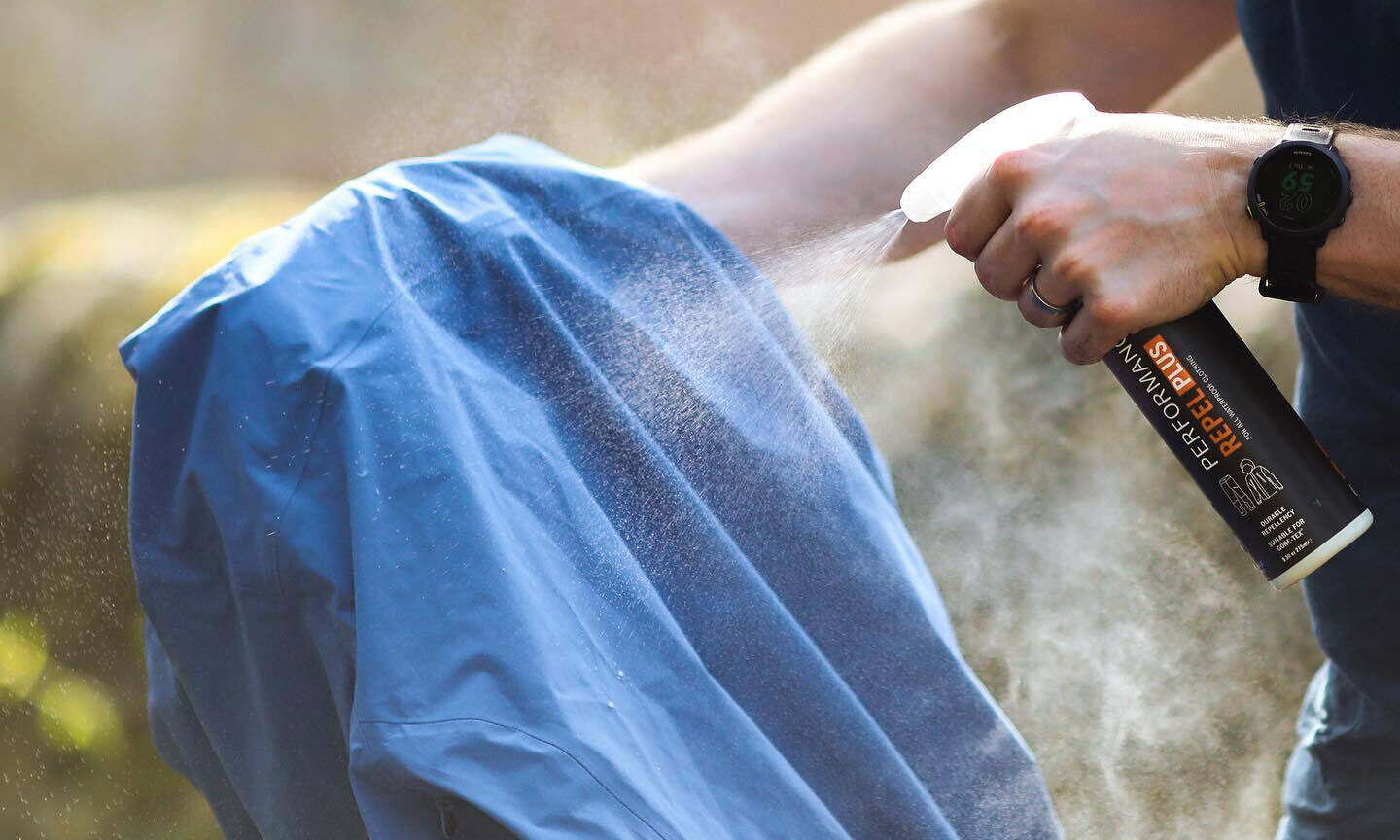
Drying
Tumble Dry (Preferred)
Most ePE jackets can be tumble-dried on a low or warm setting. Place the clean, wet jacket in the dryer on a gentle cycle and let it tumble for 20–40 minutes, or until fully dry. The controlled heat revives the DWR, allowing water to bead on the surface again. If you’ve applied a fresh waterproofing treatment, a light tumble dry also helps “cure” it for best performance.
Air Dry + Iron
If you don’t have access to a dryer, hang the jacket in a well-ventilated space and let it air dry completely (usually overnight). Once dry, gently iron it on a low setting (under 110 °C / no steam) with a thin cloth or towel placed between the iron and the fabric. Move the iron smoothly over the jacket. Always ensure the jacket is completely dry before ironing, trapping moisture in the layers can harm performance.
What to Expect
After proper drying, water should bead up on the surface of the jacket. Test it by sprinkling a few drops of water on the fabric; if they roll off, the DWR is working. If the water spreads and soaks in, it may be time to reapply the proofing.
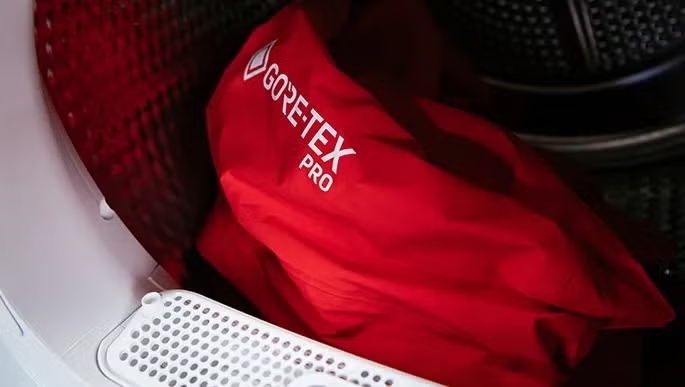
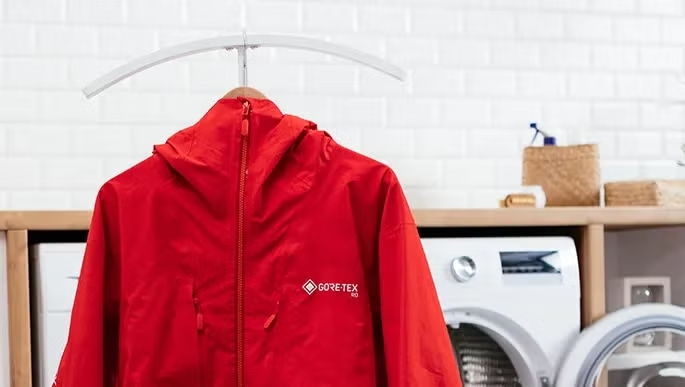
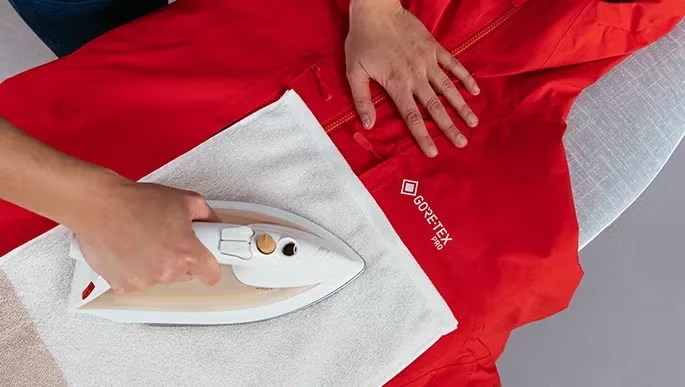
Long-Term Care: Keeping Your Jacket Performing
To get the most years out of your Gore-Tex ePE jacket, focus on a few simple habits: keep it clean with regular washes so the fabric can breathe and shed water, restore the DWR when it stops beading, and always heat-set treatments for durability. Avoid contaminants like fabric softeners, DEET, or fuel, and rinse off salt or sweat promptly. Store the jacket dry, loosely hung or folded, in a cool dark place. Finally, treat it gently in the field—avoid abrasion where possible and patch small holes quickly to preserve waterproofing. With these habits, your jacket will stay protective and reliable season after season.
Conclusion
Your Gore-Tex ePE jacket is more than just gear, it’s a long-term investment in performance and sustainability. By keeping it clean, drying it properly, and reproofing when needed, you’ll not only protect its waterproof and breathable qualities but also extend its life while reducing environmental impact. Unlike older generations, ePE relies more heavily on consistent care, but the payoff is clear: a jacket that stays adventure-ready, keeps you dry and comfortable, and reflects Gore-Tex’s shift toward more responsible innovation. With a little attention, your ePE jacket will serve you faithfully for years, performing at its best on every journey.
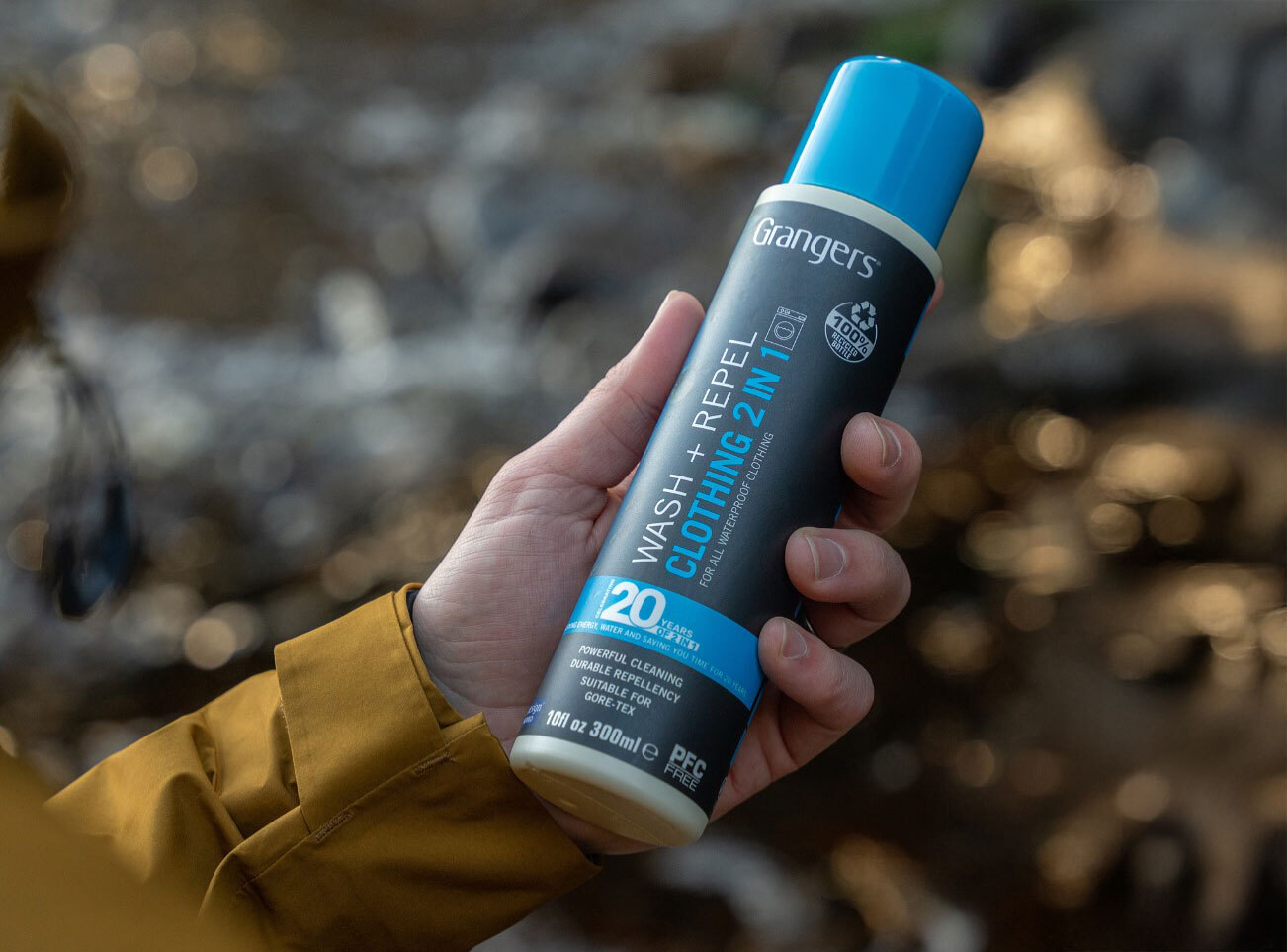
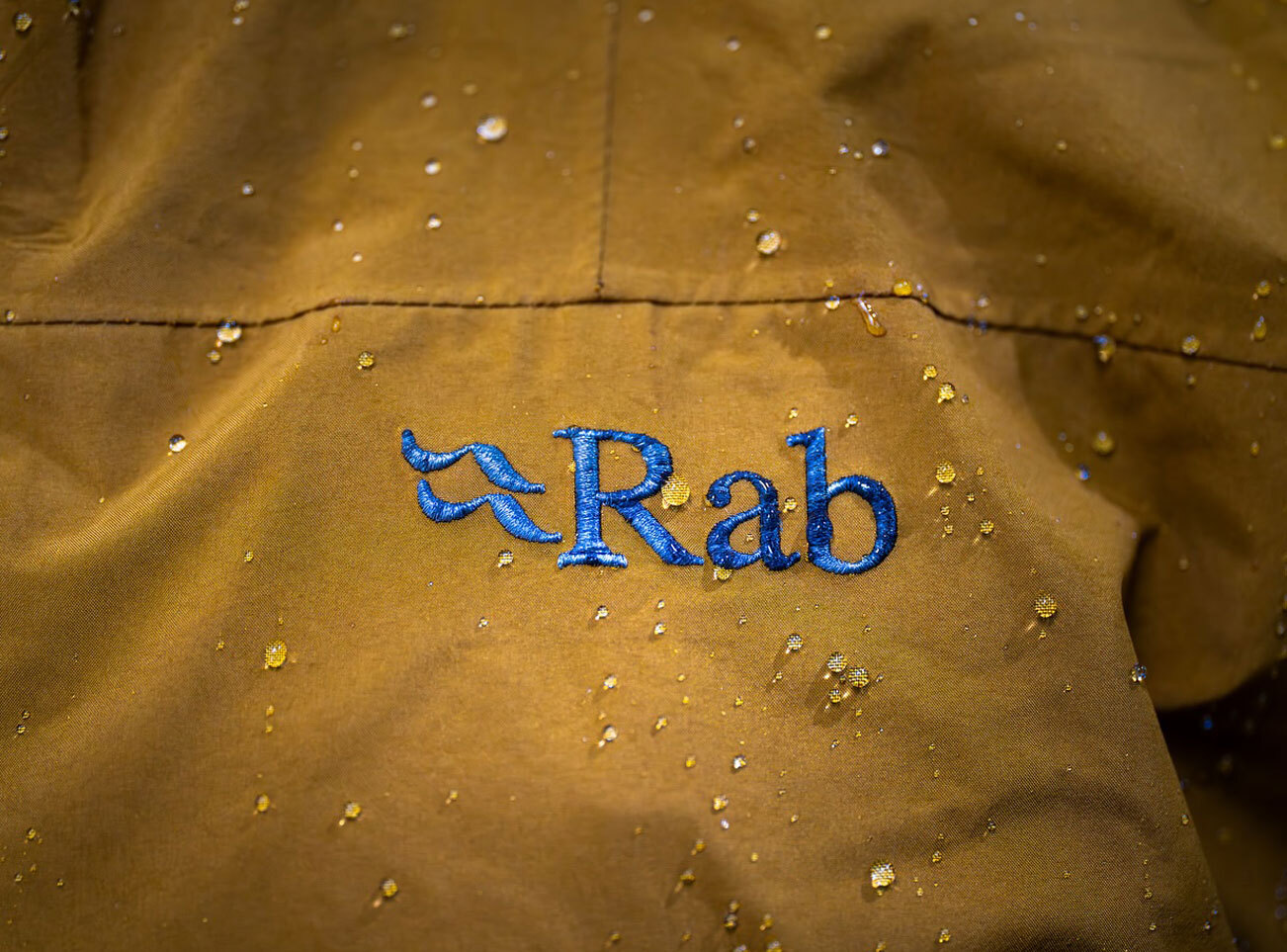
 |
||
 |
||
| Andy Neil |
||
|
Andy has been a keen long-distance hiker and wild camping enthusiast since he completed the Cleveland Way in 2015. Since then, he has walked thousands of trail miles all over the UK and is an active member of the Wild Camping UK community, being an admin of the largest wild camping community on Facebook. He strongly advocates for responsible wild camping and believes it is important to leave no trace when camping in the wilderness. He joined the UOG team in 2021 and works as a website developer and content creator. |
||
Gore-Tex’s new ePE (expanded polyethene) membrane is the next generation of waterproof-breathable technology. It delivers the trusted protection Gore-Tex is known for, but with a lighter footprint on the planet, thanks to PFAS-free chemistry and a lower carbon impact. Taking care of your ePE jacket is essential: unlike older membranes, ePE relies more heavily on the user’s care to maintain peak performance.
